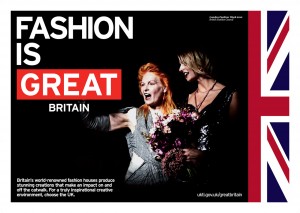British Tailoring in Latin America
I had to. I absolutely had to. After this beautiful written article about my beloved country’s President’s remarks (the country beloved, not the President, or the remarks), I just had to write something on business suits. And English gentlemen.
Let me just say that the meeting Mujica was at was held in Cuba, the land of last remaining Latin American dictatorship. So I take any words coming from people who shake a dictator’s hand and think of him as an ally with a pinch of salt. So here we go:
“We have to dress like English gentlemen!” exclaimed Mujica, clad in a rumpled white shirt. “That’s the suit that industrialization imposed on the world!”
“Even the Japanese had to abandon their kimonos to have prestige in the world,” he continued, gesturing forcefully and rapping a pen on the table to punctuate his words. “We all had to dress up like monkeys with ties.”
I don’t want to get into politics here. Or fashion. I know little about either, although I care about both (from an analytical point of view – I am not a political activist or a fashionista). But since this blog is about British exports into Latin America after all, here are my comments for British fashion exporters:
– We don’t have to dress like English gentlemen. And we definitely don’t need ties. Dress codes are changing rapidly. My husband’s been working in Uruguay for a year now. He’s never worn a tie. Or a suit. Sorry, Austin Reed. I’ve been to Lima, Santiago, Sao Paulo, Buenos Aires, Bogota, Medellin in the last 12 months and I can tell you that suits are still popular but they don’t rule our cities any more, like they used to. And their power is even less outside the cities (check out the artisans behind the Pachacuti Panama hats, they look stunning and not precisely in suits!).

Monkeys with Ties? The entrepreneurs behind successful South American start-up PedidosYa! (where’s the suit?!)
– But we might want to dress like “English gentlemen” – this is not down to imperialism, Mr Mujica, sorry, it is down to powerful British fashion marketing (check out the current Britain is Great campaign and the amazing work done by UKTI on the fashion front across Latin America). And this is not just the government, it’s the films (I know many a South American lady who would love to see their partner dressed like Sean Connery – not English, I know! – or Michael Caine), the music (one of those lovely Beatles suits with those 60s ties), the powerful marketing from brands like Burberry’s, Austin Reed, Thomas Pink, and the whole of Saville Row…
– We haven’t quite worked out yet that that 19th century (even mid-20th century) image of an “English gentleman” with a bowler hat, mac and umbrella doesn’t really quite apply to England any more. Now, I lived 13 years in Britain and that image is 1) nearly lost 2) very focused on London and the City in particular and 3) nearly inexistent in the “regions” (I had the pleasure of living in Yorkshire six years and most men there would laugh at the “English gentlemen” stereotype) – I wonder what Mujica thinks of Richard Branson’s attire.
– And finally, Mr Mujica, you touched on a sensitive topic, without even realising. How about us, women? Or do they not count in your rant about imperialism, the labour force and political fashion? I’ve hardly seen women in full suits in South America…
Export Advice for British Fashion Brands
And here’s some export advice for British fashion brands, especially those in tailoring:
– Each market is different. You will find that even within a city (and we’re not talking a country), some people (depending on their age, sector, socio-economic status, place of work and so on) will be more inclined than others towards (British) tailoring. Make sure you don’t put us all in the same bag. What motivates a 25-year old Mexican banker in Mexico City to buy a suit is not the same as what will motivate a 25 year-old Uruguayan software entrepreneur based in Punta del Este.
– British sells. British tailoring sells a lot. And British origin does, too. A suit made in Britain will carry a premium, no doubt. Make the most of it.
– Move with the times. Unlike Mujica, refresh your concept of British tailoring in Latin America. This is linked to listening to your consumer. Are they buying British fashion because of James Bond or because of David Beckham? You need to understand how your consumer feels about it and this will definitely vary from Mexico to Argentina.
– Ladies spend. Don’t ignore your female market. Ladies spend a lot of cash in Latin America and every day we can have a stronger say about what we want to wear to work, and not. We like to look smart. But we’ve had enough of trying to “look like men”. Can you cater for us?
Mujica has a point about Latin America’s identity. I know where he’s coming from. A lot of indigenous people have been repressed in Latin America and European values have been imposed on them, fashion being just an exteriorisation of this. He also says an awful lot of things. Some very, very clever. Some, well, not. But suits, shirts and ties also have their own place in Latin America. And that place is changing fast.
For the video in Spanish and the original words used by José Mujica, click HERE.
For an awesome Latin American fashion blog, check out Blog Couture
And, finally, don’t miss out on an event that Mujica would love: Fashion Revolution Day 2014 (Who Made Your Clothes?)



